2025.07.30
Savor the Summer in Tokyo: A Vegan Journey Through Japan’s Seasonal Vegetables
By Chef Yuuki Tanaka, owner of Ise Sueyoshi — Tripadvisor Best of the Best: Japan #1, World #12.(source).

What You’ll Learn in This Article
- What makes Japanese summer vegetables like cucumber, eggplant, corn, and tomato both delicious and culturally meaningful
- How kaiseki cuisine reflects the essence of Japan’s summer season
- Practical tips for vegan travelers dining in Japan
- How Ise Sueyoshi offers fully plant-based, vegan-friendly kaiseki in Tokyo
- Why enjoying summer kaiseki with seasonal vegetables can become a highlight of your Japan trip
Japan Summer Guide
Visiting Japan in August means stepping right into the heart of summer. From lively festivals and dazzling fireworks to an abundance of seasonal vegetables, this time of year offers a perfect opportunity to experience Japanese culture through all five senses.
While the heat and humidity can be intense, you can enjoy cooler indoor sightseeing during the day, and then head out in the evening for Bon Odori festivals or night markets. To make the most of your summer trip, be sure to check local festival and fireworks schedules in advance. Don’t forget your warm-weather essentials—light clothing, a hat, a handheld fan or cooling towel, and a sunshade.
For vegan travelers, Japanese summer holds special charm. With roots in Shojin Ryori (Buddhist vegetarian cuisine), Japan offers a range of dishes that are naturally plant-based—such as chilled cucumber and tomato appetizers, or corn purée soups—without compromising on flavor.
Seasonal flavors and cultural experiences come together to make summer in Japan truly unforgettable.
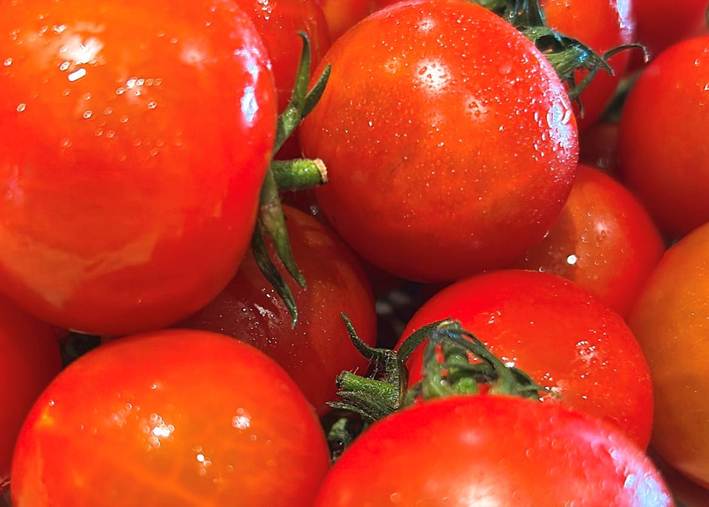
Summer Veg
In Japan, there is a deep-rooted cultural appreciation for “shun”, the idea of enjoying ingredients at the peak of their seasonal flavor. Summer vegetables, in particular, play an essential role during this time of year.
Cucumbers, eggplants, tomatoes, and corn are rich in water content and help cool the body—making them a form of “edible refreshment” in Japan’s intense summer heat.
These vegetables also delight the eyes with their vivid colors—purples, reds, yellows, and greens—which naturally stimulate the appetite through visual appeal.
Japan’s unique natural environment—its humid climate, varied soil conditions, and strong post-rainy-season sunlight—imparts distinct character to the flavor, aroma, and texture of summer produce.
More than just ingredients, Japan’s summer vegetables are seasonal treasures—flavors that can only be truly experienced in this land, at this moment.
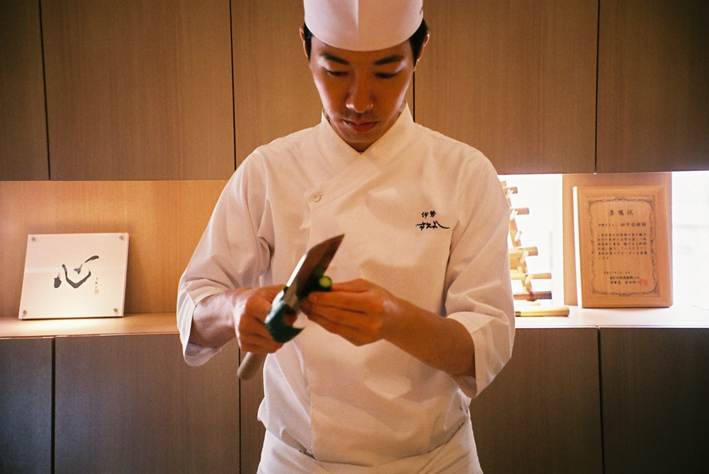
Introduce Summer Veg
Japan’s iconic summer vegetables each carry their own unique character and story.
Here are four seasonal vegetables you’ll want to discover during your journey.
Eggplant
A beloved staple in Japanese cuisine, eggplant comes in over 170 varieties across Japan. This versatile vegetable soaks up oil and dashi beautifully, transforming its texture and flavor depending on how it’s prepared.
Popular dishes include agebitashi (deep-fried and soaked in broth), yaki nasu (grilled eggplant), and dengaku (miso-glazed eggplant). With its melt-in-your-mouth texture and umami-rich taste, nasu takes center stage on the summer table.
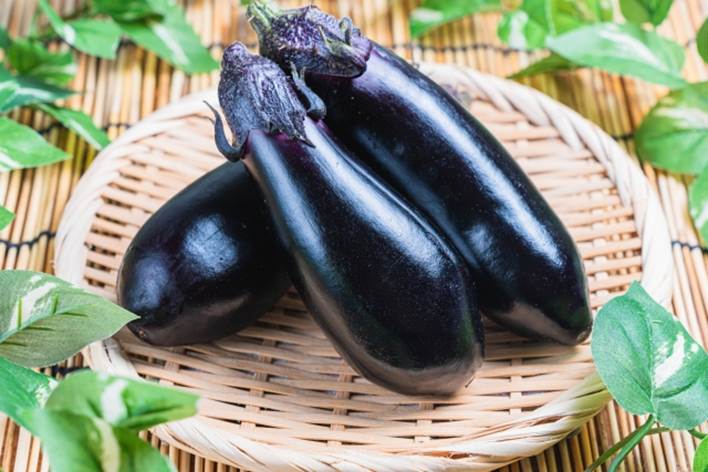
Cucumber
Packed with water content, cucumber is a refreshing savior during Japan’s hot summer months.
Crisp and delicious when eaten raw, it’s also essential in simple preparations like asazuke (lightly pickled cucumber) or Yamagata no Dashi, a cold condiment made with finely chopped summer vegetables.
Its cool, crunchy texture makes it a must-have in both home cooking and traditional cuisine.
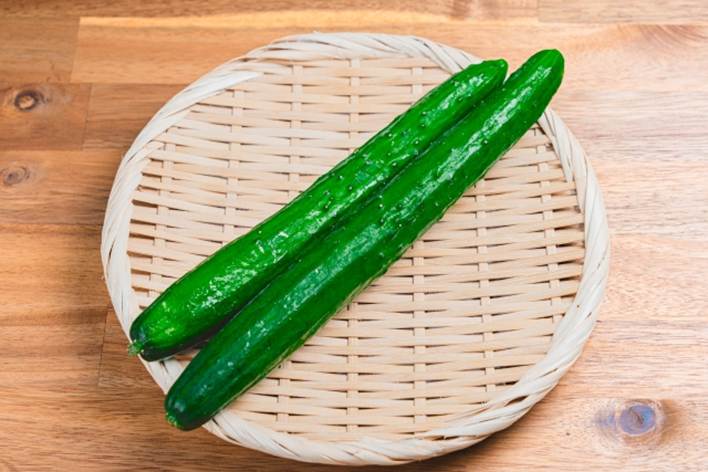
Sweet Corn
A true taste of Japanese summer, corn in Japan is exceptionally sweet, with tender skins and juicy kernels that burst with flavor.
When freshly harvested, it’s so moist and vibrant that it can even be eaten raw—a perfect example of shun, or seasonal peak.
Whether grilled over charcoal for a smoky aroma, fried crisp as tempura, or blended into a silky surinagashi soup, Japanese corn shines in every preparation.
It’s a completely different experience from the corn you may be used to—one that will surprise and delight you.
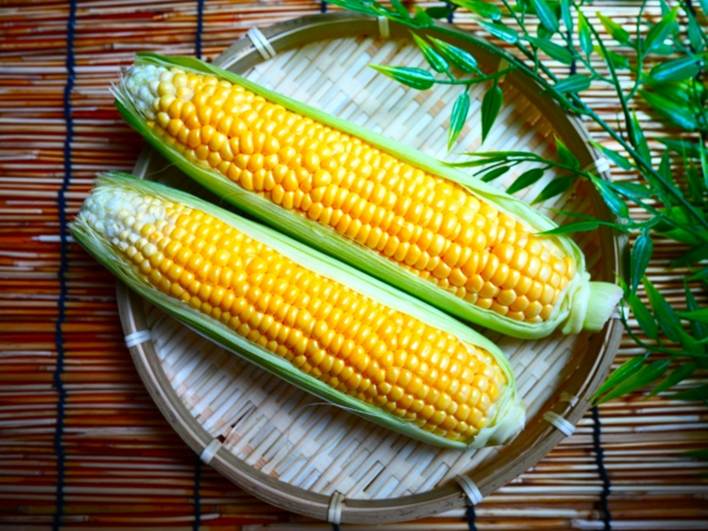
Tomato
A perfectly balanced fruit of sweetness and acidity—best enjoyed in the summer.
Served chilled or in salads, tomatoes help cool the body on hot days.
Across Japan, you’ll find a wide variety of cherry tomatoes and traditional heirloom breeds, each offering unique flavors and textures.
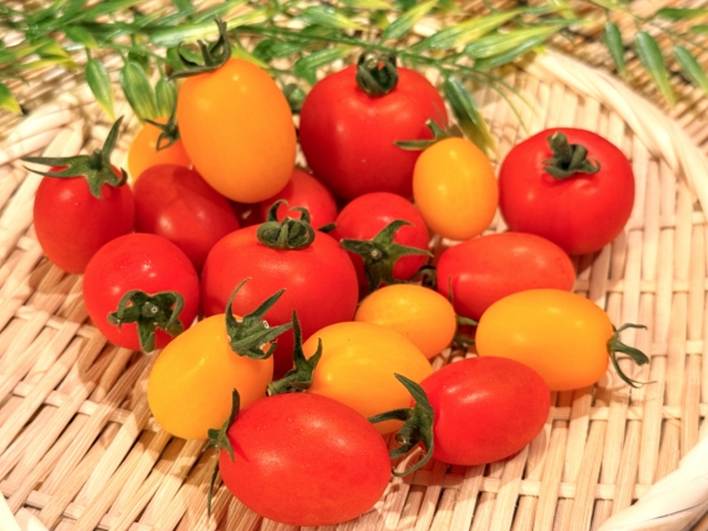
There are several ways to enjoy seasonal summer vegetables while traveling in Japan.
One highly recommended experience is visiting local farmers’ markets or direct produce stands. These places offer vegetables grown in the local soil, sold fresh and often brought in directly by the farmers themselves. You can see, touch, and even smell the vegetables—something unique to these markets. In rural areas, these are often found within “Michi-no-Eki” roadside stations. In Tokyo, weekend farmers’ markets are a great alternative.
Another wonderful way is through local izakaya (Japanese pubs). Simple preparations such as chilled tomatoes, simmered eggplant (nasu no nibitashi), or lightly pickled cucumbers reveal the true power and flavor of the ingredients. Even the most modest dishes express the season with clarity and depth.
For those who wish to immerse themselves even deeper in the taste of summer, kaiseki cuisine offers the ultimate experience. Seasonal vegetables appear as part of a multi-course dining journey, artfully arranged in beautiful vessels that reflect a deep sense of aesthetics. Through this refined presentation, you can taste and feel the essence of a Japanese summer.
What all of these experiences have in common is the opportunity to encounter “shun”—the peak of seasonal flavor born from Japan’s unique climate and landscape.
A simple meal, discovered during your journey, may become a lasting memory of summer in Japan. Let yourself be open to those moments.

Japan Veg Traits
Japanese summer vegetables are not just ingredients—they are seasonal gifts nurtured by the country’s unique climate, geography, and cultural sensibility. Distinct from their overseas counterparts, these vegetables embody regional character and a refined Japanese aesthetic. Simply put, Japanese vegetables are truly delicious.
Take for example Kamo nasu from Kyoto or Mizu nasu from the Kansai region. These are heirloom or region-specific varieties with unique shapes, colors, and flavors. Their individuality is a direct result of the land they grow in, the climate they adapt to, and the dedicated care of local farmers.
In Japan, many farms are small-scale, and farmers have developed thoughtful methods to suit the humid, rainy conditions—such as building well-drained fields and maintaining organic-rich soils. Vegetables grown in this environment have a delicate flavor and texture that can only be achieved through careful, labor-intensive cultivation. They are truly “blessings from nature.”
Japanese cooking methods also highlight the character of vegetables in a distinct way. Instead of overpowering flavors, chefs rely on subtle dashi made from kombu (kelp) or katsuobushi (dried bonito flakes) to bring out the essence of the ingredients. This “art of subtraction” allows the natural sweetness, aroma, and seasonal expression of each vegetable to shine in every bite.
There is also a long-standing tradition in Japan of enjoying vegetables raw. Dishes such as chilled tomatoes, lightly pickled cucumbers, or fresh vegetable platters served with miso paste reflect a respect for freshness and texture, especially during the summer months.
Japanese summer vegetables also tend to have thinner skins and a small, hand-fitting size. This is no accident—it reflects the Japanese attention to subtle mouthfeel and visual beauty, offering a perfect balance of ease and elegance in eating.
In Japan’s sweltering summer, the crisp, juicy quality of these vegetables provides natural relief from the heat. Their texture and moisture gently restore the body, making them more than just food—they are a form of seasonal wisdom.
Climate, cultivation, culinary technique, and aesthetic—all these elements come together in Japanese summer vegetables. Their appeal lies not only in their flavor, but in the rich story behind each bite, inviting you to savor both the taste and the culture they carry.
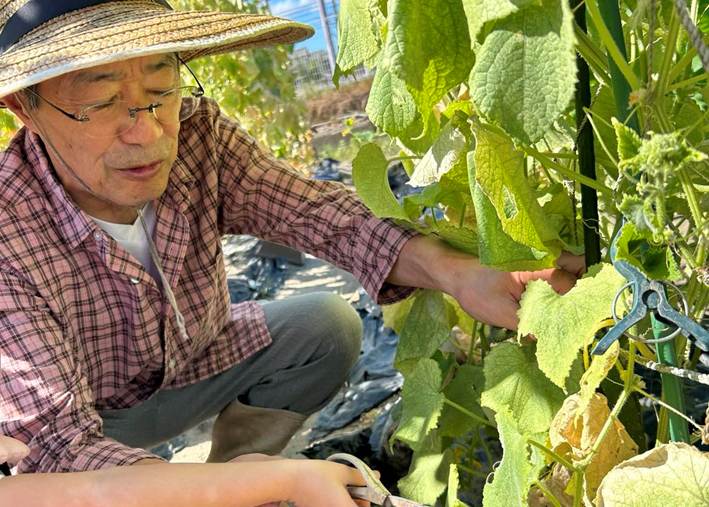
Sueyoshi Summer Recipes
At Ise Sueyoshi, a kaiseki restaurant located in Hiroo, Tokyo, we create seasonal dishes that highlight the vibrant flavors of summer vegetables at their peak. Each plate is thoughtfully crafted to be gentle on both body and soul, offering a satisfying experience for vegan and vegetarian guests as well.
Here are some of the summer vegetable dishes we serve at Ise Sueyoshi.
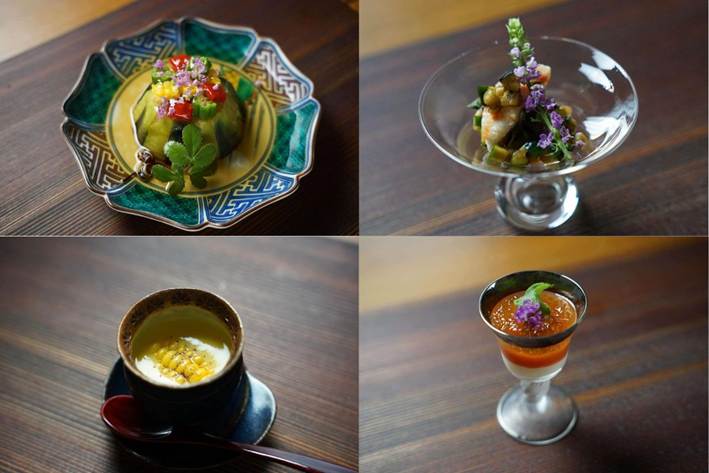
Nasu Agebitashi (Marinated Fried Eggplant)
Lightly fried eggplant is soaked in a chilled plant-based dashi made from kombu (kelp), Jerusalem artichoke, and burdock root. The melt-in-your-mouth texture of the eggplant, combined with the umami-rich broth, makes this a deeply satisfying dish—perfect for cooling the body during Japan’s summer heat.
***
Yamagata Dashi (Chilled Summer Vegetable Relish)
Finely chopped cucumber, myoga (Japanese ginger), and shiso leaves are mixed into a light soy-based sauce to create this refreshing summer relish. Bursting with the cooling aroma of Japanese herbs, it’s a perfect appetizer or palate cleanser during the hot season.
***
Sweet Corn Soup
We carefully extract broth from corn cobs, then gently simmer the kernels to preserve their natural sweetness. Seasoned simply with salt, this chilled soup highlights the mellow, nourishing flavor of fresh summer corn.
***
Chilled Tomato
A three-layered dish featuring peeled ripe tomato, creamy tofu, and a delicate dashi jelly. Garnished with shiso flowers and ice plant, it offers a refreshing harmony of aroma, flavor, and vibrant color.
Taste Summer Japan
In Japanese food culture, there is a deep-rooted aesthetic of “tasting the seasons” through fresh, seasonal vegetables. Especially in summer, the abundance of visually refreshing and vibrant produce allows diners to experience the essence of Japanese summer with all five senses—through colors, aromas, textures, and presentation.
For example, the deep purple of eggplant, the vivid red of tomatoes, and the refreshing greens of cucumber or okra together create a seasonal landscape on the plate. The use of chilled dishes, decorative ice, and natural accents like maple or bamboo leaves are uniquely Japanese ways of evoking coolness through presentation.
Moreover, Japanese cuisine interacts with the climate itself. During the hot and humid summer, chilled dishes, lightly salted flavors, and refreshing condiments help balance the body—embodying the philosophy of “eating in harmony with the season.”
For many Japanese people, summer vegetables are tied to nostalgic childhood memories: chilled tomatoes enjoyed at a grandmother’s house, or simmered eggplant eaten on the porch at dusk. These dishes are not only seasonal but also deeply emotional.
The vibrant colors and delicate plating also make for photogenic moments during your travels, turning each meal into a beautiful and memorable experience.
Savoring summer vegetables in Japan is more than just eating—it’s a cultural and sensory journey, offering a moment of connection with the country’s seasonal aesthetics and culinary heritage. One of the most refined and beautiful expressions of summer vegetables can be found in Japan’s traditional kaiseki cuisine.
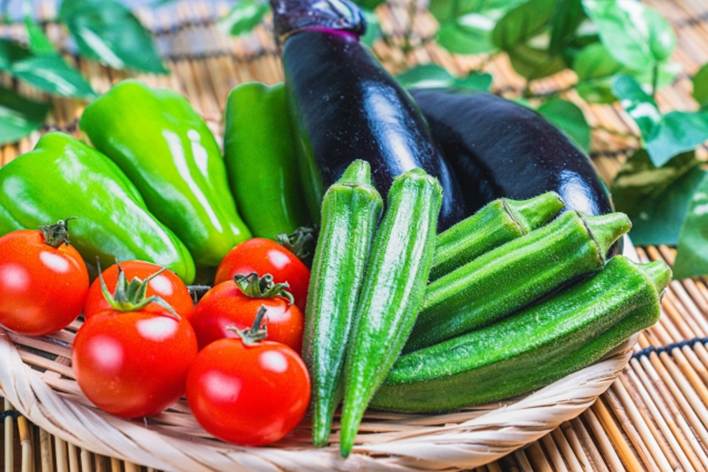
Summer Through Kaiseki
Kaiseki cuisine in Japan is not merely a “meal” but a stage upon which the changing seasons are experienced through all five senses. Especially in summer, every element of the kaiseki course is designed to soothe the heat, be gentle on the body, and bring a sense of calm to the heart.
Kaiseki follows a traditional progression of courses—such as sakizuke (starter), wanmono (soup), hassun (seasonal platter), nimono (simmered dish), and reisai (cold dish). In summer, the entire course is thoughtfully composed to feel light and refreshing, bringing a sense of “coolness” in both temperature and mood.
The use of chilled dishes, cold sake, and even ice-filled vessels introduces contrast in temperature—an important element of the presentation. From sight to touch, every detail reflects the Japanese wisdom of embracing and mitigating summer heat.
A hallmark of summer kaiseki is the use of aromatic herbs and vegetables—such as myoga (young ginger buds), shoga (ginger), and shiso (perilla leaves). Their refreshing fragrance and subtle heat gently stimulate the appetite, bringing vitality to bodies fatigued by the heat. The flavor profiles combine both brightness and depth, offering a layered culinary experience.
In kaiseki, the philosophies of ichigo ichie (“once-in-a-lifetime encounter”) and ma (“intentional space or silence”) are deeply respected. Each dish is served in modest portions, with an emphasis on balance and restraint. Even the empty space on a plate carries meaning, expressing seasonal sentiments, tranquility, and reverence for nature.
Thus, summer kaiseki is not only about enjoying seasonal ingredients—it becomes a moment of reflection on how to embrace and live in harmony with the season itself. The interplay of cold and warm, aroma and flavor, silence and presence creates a delicate rhythm unique to this time of year.
At Ise Sueyoshi, we offer this “reflection of summer” through kaiseki, inviting our guests to experience the essence of Japan’s seasons through all five senses.

What is Kaiseki
Kaiseki (懐石) is a traditional Japanese culinary practice whose name originally derives from “kaiseiki”—a warm stone that Zen monks would place inside their robes to ward off hunger during long periods of training. Over time, this concept evolved in connection with the tea ceremony, becoming “cha-kaiseki,” a simple and elegant meal served as part of a tea gathering. While today it is sometimes confused with kaiseki written with different characters (会席), which refers to banquet-style dining, true kaiseki is rooted in tranquility, seasonality, and the spirit of thoughtful hospitality.
At the heart of kaiseki lies a distinctly Japanese philosophy: using seasonal ingredients, devoting sincere care to each individual guest, and offering a dining experience that engages all five senses. Kaiseki is not simply about eating—it is about a narrative woven from the arrangement of dishes, the choice of vessels, the aroma, the temperature, and even the ambient sounds and cultural nuances that surround the meal.
A standard kaiseki progression typically includes courses such as sakizuke (appetizer), wanmono (soup), mukozuke (sashimi), yakimono (grilled dish), nimono (simmered dish), shiizakana (main dish), gohan with pickles, and mizugashi (dessert). Each dish is served in a gentle rhythm, varying in temperature and presentation, in harmony with the natural flow of the season.
Read more: What is Kaiseki cuisine?
For vegan travelers visiting Japan, a common concern is the use of animal-based dashi, particularly the bonito-flake-based broth foundational to much of Japanese cuisine. At Ise Sueyoshi, we have developed and refined entirely plant-based vegan courses, using carefully selected vegetarian ingredients and umami-rich broths. Upon advance request, we can also accommodate gluten-free, pork-free, and other dietary restrictions with the utmost care and detail.
Even if you are experiencing kaiseki for the first time, there is no need to worry. While there are basic table manners—such as how to handle chopsticks, lift bowls, or sip sake—the most important etiquette is to taste attentively. What matters most is to be present, to receive the intention of the chef, and to savor each dish with a calm and open heart.
Kaiseki is not merely a meal; it is a cultural experience that allows you to feel Japan’s seasons and aesthetic sensitivity through food. It is a time not only to engage your palate, but to enrich your soul through quiet reflection, beauty, and grace—that is the true allure of kaiseki.
Read more about Vegan Dashi

Vegan Travel Tips
Traveling as a vegan in Japan can be a rewarding experience—especially if you’re prepared with the right knowledge and tools to navigate meals confidently and comfortably.
First, it’s important to understand that the concept of “vegan = completely plant-based” is not yet widely understood in Japan. Therefore, having a few simple English phrases on hand can help clarify your needs when dining out. For example:
“Dashi without fish?”
This is especially helpful because many animal-based ingredients are not immediately visible. Even dishes that appear to be free of meat or fish often include animal-derived elements in the broth or seasoning. Common non-vegan ingredients to watch out for include:
- Bonito-based dashi (frequently used in udon, soba, simmered dishes, and miso soup)
- Fish sauce (sometimes hidden in salad dressings or pickled vegetables)
If you wish to avoid these ingredients, bringing a pre-written dietary restriction or allergy card in Japanese can make communication much easier. Whether on paper or saved in your smartphone, a clear explanation of your dietary needs reduces the chance of misunderstandings.
For restaurants that require advance reservations, it’s especially important to communicate your vegan request when booking. Sending an email in advance, clearly stating your preference for a completely plant-based meal—including broth and seasoning—greatly increases the likelihood of receiving proper accommodations.
If you find yourself hungry while exploring a city, you’ll be surprised to discover that convenience stores and supermarkets often carry vegan-friendly snacks. Examples include:
- Packs of edamame (soybeans)
- Fresh-cut fruits
- Chilled tomatoes or lightly pickled cucumbers
- Additive-free rice balls (onigiri – be sure to check the filling and ingredient list)
Keep in mind that Japan’s summer is hot and humid, which can be physically draining during sightseeing. Take your time with meals, stay hydrated, and enjoy vegetables with high water content to help your body stay cool and energized.
There’s no need to hesitate when communicating that you are vegan. With a little planning and the right expressions, you can enjoy unforgettable culinary moments in Japan. So relax, prepare, and let your senses fully experience the vibrant taste of a Japanese summer—vegan style.
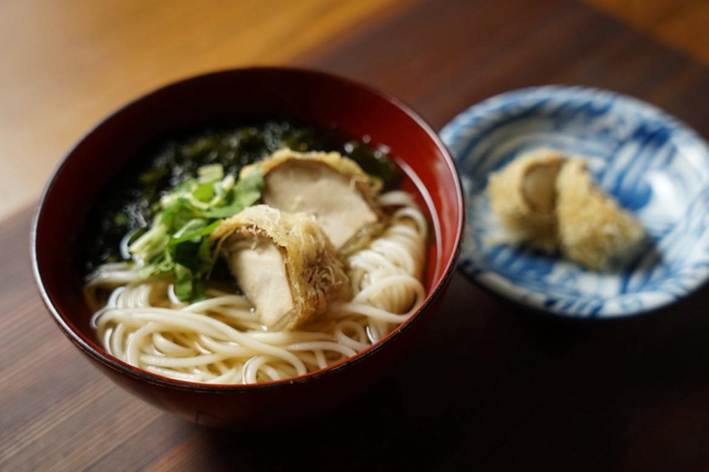
and soft texture, while wagyu beef from Iga in Mie literally melts in the mouth with rich, savory flavor.
We also serve rare ingredients such as wild-caught fugu (pufferfish)—a true rarity in Tokyo—and a seasonal tuna course using the highest quality cuts from Minami-Ise.
And just like with tairagai, each seasonal ingredient is prepared using techniques that best showcase its character in that very moment.
—–
Vegan at Sueyoshi
At Ise Sueyoshi, we proudly offer a fully plant-based omakase kaiseki course for our vegan guests, prepared with care and respect for your dietary needs. With advance notice, we can ensure a memorable and worry-free dining experience.
Our dashi (broth) is made entirely without animal products, using carefully selected plant-based ingredients to achieve natural depth and umami. We continuously refine our methods to balance rich flavor with clean simplicity.
We also accommodate a wide range of dietary requests, including gluten-free, allium-free (no garlic, onion, etc.), and nut allergies. To ensure the safety and satisfaction of all our guests, we place great importance on thorough communication before your visit.
For each dish, we provide detailed explanations of the cultural background and cooking techniques—offered in English—so that even first-time kaiseki diners can appreciate the culinary artistry on a deeper level.
Ise Sueyoshi is also honored to host guests for special occasions such as birthdays, honeymoons, and celebration dinners. We are happy to help create unforgettable memories with personalized message plates, floral arrangements, and other custom touches.
This summer, why not enjoy a truly special journey by experiencing kaiseki cuisine in Tokyo?
Savoring vibrant, refreshing summer vegetables with all five senses brings a gentle sense of coolness to both body and soul.
Each dish—reflecting the spirit of a Japanese summer—may become a lasting and unforgettable highlight of your travels.
For more about our gluten-free please visit this page.
Many choose Ise Sueyoshi as a gift dinner for birthdays or honeymoons.
Learn more this article.
Guest Voices
I had a great and a very warmth evening with my family, by the welcome of the chef and sous-chef. The food was delighted and sparkling. For me, it went along very well with the hot Summer night in Tokyo. My father was very happy with the selection of Sake. He is still talking about it a couple days after the dinner. And all that comes with a very reasonable and affordable price.
We are proud to continue delivering an exceptional dining experience that earned us the Tripadvisor Travelers’ Choice Best of the Best 2024 award, ranking among the Best Restaurants in Tokyo. Our commitment to excellence in service and our dedication to offering the finest kaiseki dining experience in Tokyo remain unwavering. Discover more about our journey to becoming one of the best restaurants in the city[here].

Visit Ise Sueyoshi
Location: Conveniently located 12 minutes from Roppongi Station and 8 minutes from Hiroo Station.
Hours: Open 5:00 PM – 10:00 PM, reservations only. Closed on Sundays and Mondays.
Book Your Experience ☟
Reservation Information
In response to many requests from our guests, Ise Sueyoshi now accepts reservations up to 180 days in advance of your preferred dining date.
With only 10 seats available, we are committed to providing a smooth and personalized reservation experience.
To ensure you don’t miss the opportunity to celebrate your important anniversaries or special occasions with us, we highly recommend making your reservation as soon as your plans are set.
If you are planning a trip to Japan, we warmly invite you to include a special moment at Ise Sueyoshi in your itinerary.
Many of our guests also choose us for their final evening in Japan, as a beautiful and memorable way to conclude their journey.
Please note that our reservation policies may change without prior notice. For the latest updates, please refer to our reservation page.
Conclusion
At Ise Sueyoshi, we humbly invite you to experience a dining journey that caters to all dietary needs. Whether you’re vegan, halal, or have specific preferences, we are here to create a memorable and inclusive dining experience for you, especially for special occasions like a honeymoon.
Recommended Blog Posts
On our blog, we offer further insights into Tokyo’s rich food culture and the unique culinary experiences we provide at Ise Sueyoshi. Be sure to check out these recommended posts:
Where Fireworks Meet Tokyo Kaiseki: A Summer Night of Elegance |
Why You Must Try Kaiseki Cuisine in Tokyo: A Unique Experience of Culinary Art and Intellectual Delight |
@isesueyoshi
o 🏆 Awarded the prestigious Best Luxury Restaurant by TripAdvisor
o 🌍 Ranked 2nd worldwide, 1st in Japan, and 1st in Asia
o ⭐ Google rating of 4.9 (as of 2024)
o ✅ Vegan-friendly
o ✅ Halal selections
o ✅ Gluten-free options
o ✅ Vegetarian delights
o ✅ Pork-free choices
o ✅ Perfect for pescatarians
o 🌈 Welcoming and inclusive environment for LGBTQ guests
o 🚃 Just a 12-minute walk from Roppongi Station or 8-minutes from Hiroo Station
o ⏰ 5:00 PM – 10:00 PM (reservations-only)
o 📅 Closed on Sun and Mon
